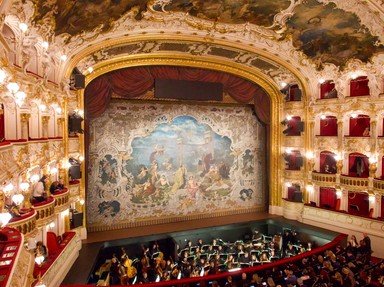Quiz Answer Key and Fun Facts
1. Which of the following elements was NOT common in traditional Native American ritual and theatre?
2. The Navajo chantways were theatrical ceremonies performed to restore and maintain the world's balance. Up to how many nights could these ceremonies last?
3. The Mesoamerican Ballgame, popular throughout Mesoamerica, was played on courts of what shape?
4. In the Aztec culture, human sacrifice was used to honor many gods, including the god Tezcatlipoca, "The Smoking Mirror". In this ritual, a woman was sacrificed.
5. From which culture did the text "Rabinal Achi" come?
6. Sor Juana Ines de la Cruz (1651-1695) was a Mexican-born nun and author. Her "The Divine Narcissus" combined pagan traditions with what kind of traditions?
7. What was a common character in Native American rituals and dramas?
8. A very simple dramatic tradition among Native American cultures involved individuals going into nature to have a transcendent interaction between the human and spirit worlds. What were these called?
9. Which is the best description of "Apu Ollantay"?
10. What were "powwows"?
Source: Author
rj211
This quiz was reviewed by FunTrivia editor
ltc717 before going online.
Any errors found in FunTrivia content are routinely corrected through our feedback system.

